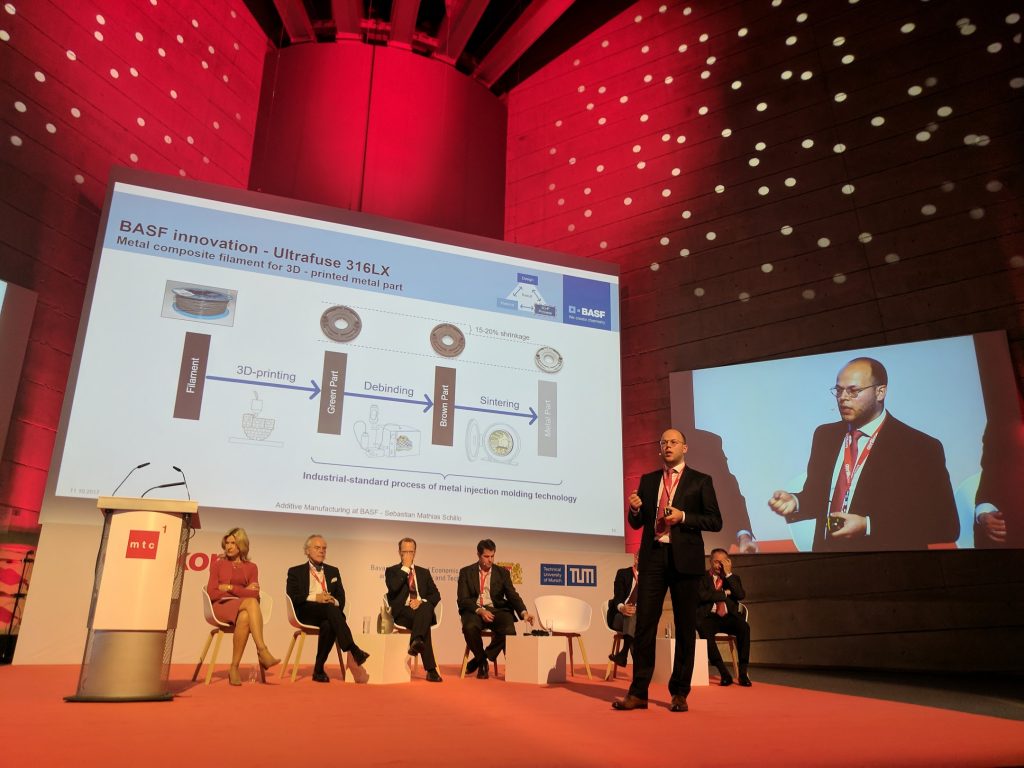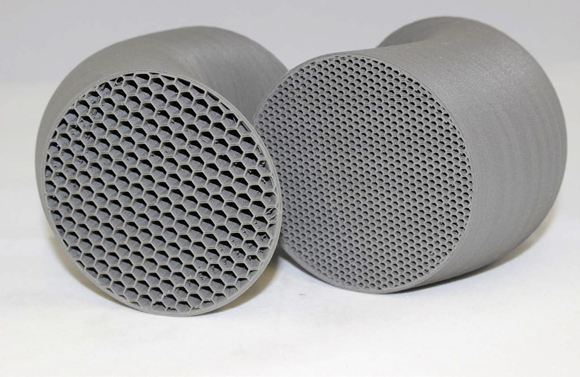German chemical producer BASF has launched the Ultrafuse 316LX filament. Made from a polymer infused with stainless steel particles, Ultrafuse 316LX can be 3D printed as normal on a typical desktop FFF 3D printer. Then, in a process becoming increasingly popular through products such as Virtual Foundry’s Filamet and a recent release from Fraunhofer IFAM, it is sintered to leave a pure metal object.
In a recent case study, Ultrafuse 316LX has been put to the test inside Apium Additive Technologies FFF 3D printers, known for the ability to 3D print high performance PEEK plastic in both amorphous and semi-crystalline phases.

From green-bodies to finished parts
BASF’s Ultrafuse 316LX filament is composed of a polymeric binder with 80 wt.-% stainless steel 316L particles. Initially, items made from the material are 3D printed as “green-bodies” which are larger than required to account for shrinkage caused by debinding.
After 3D printing, polymer binding content of the item is removed using a catalyic acid process. To finish the part is sintered in an oven, fusing together the metal particles.

The structural advantage of FFF metal
The debinding and sintering process, which was first introduced to Metal Injection Moulding (MIM) by BASF in the 1980s, leaves objects with a number of structural advantages.
According to Apium CTO Dr. Brand Okolo, “The green-body printed from Apium’s printer have structural properties which enhance their survival chances when put through de-binding and sintering processes.”
Additionally, “The sintered parts,” from Apium’s 3D printers, “meet geometric requirements […] mechanical properties of the sintered parts compare quite well with that of bulk 316L stainless steel” and porosity is “generally below 2%.”

Making metal more accessible
The main advantage of making metal parts on an FFF 3D printed is however in the material handling and cost. Dr. Okolo continues to explain, “The metallic powders [typically] needed for 3D processing are expensive, the material handling raises obnoxious health-safety-environmental issues, laser processing is a high energy demanding process and the process waste material can account for up to 80% of the feedstock.”
This is also one of the unique selling points of forthcoming systems from Desktop Metal and Markforged. Writing in the Future of 3D Printing guest article series, Markforged CEO Greg Mark says “Strong printing is now taking over greater parts of the production line and efficiencies continue to grow. The pace of product launches will quicken, products can be designed on a Monday, prototyped on a Tuesday and launched to full production by Wednesday.”
For more of the latest in metal 3D printing like, follow and subscribe to 3D Printing Industry. Register on our 3D printing jobs site here.
Featured image shows an assortment of metal objects made on Apium 3D printers using BASF Ultrafuse 316LX filament. Photo via Apium



